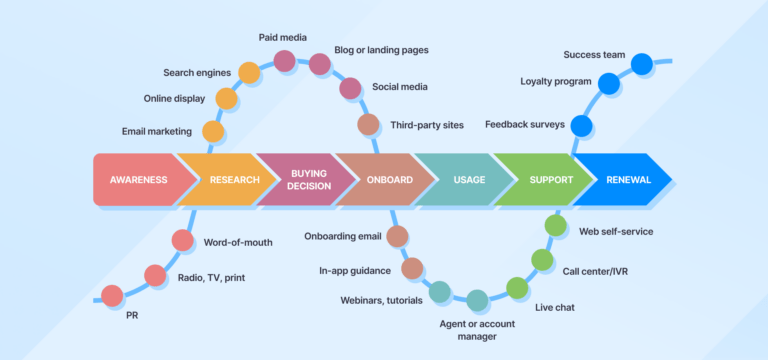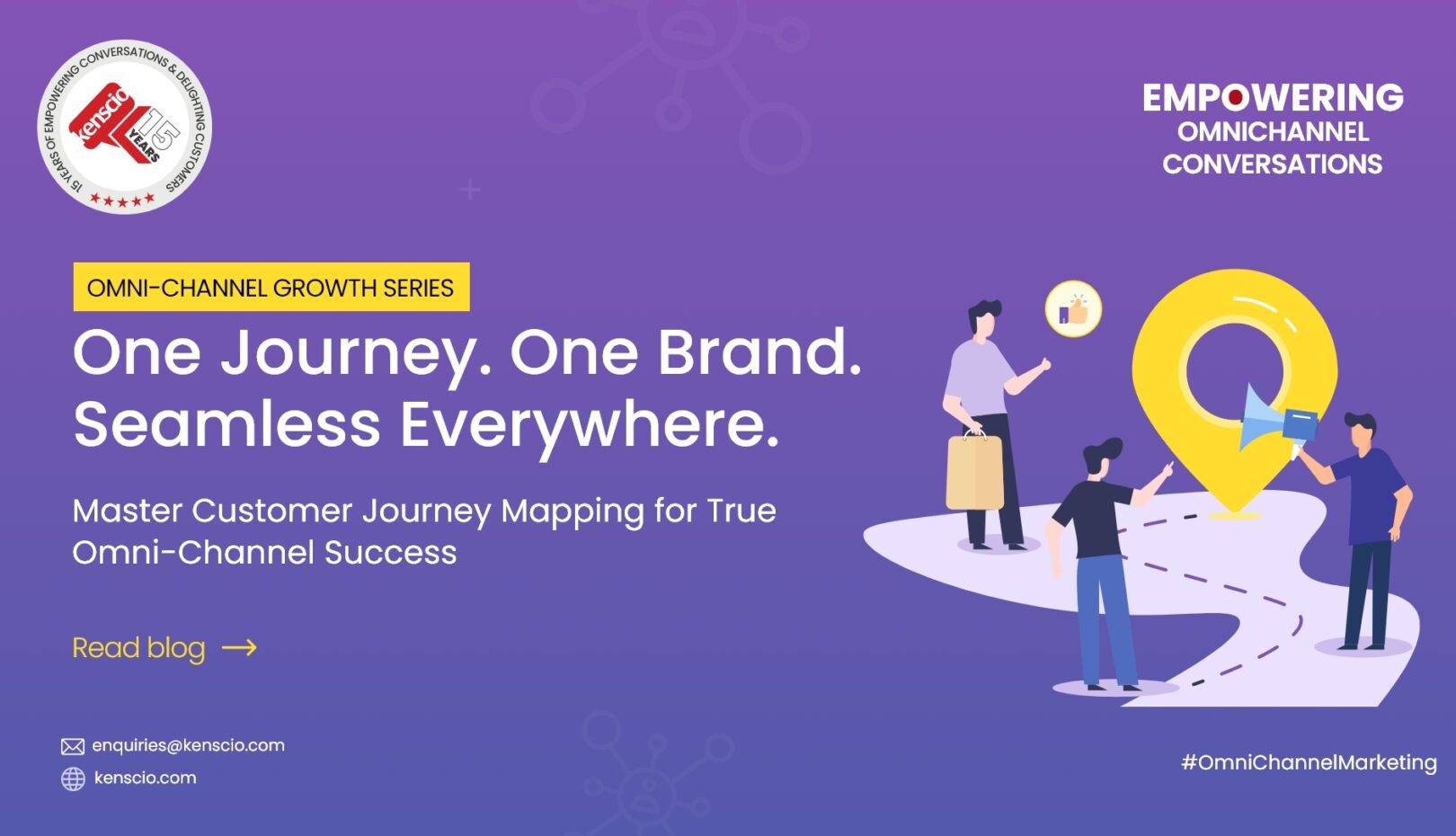- May 30, 2025
- by Parbeshkumar Maurya
Customer Journey Mapping: Delivering a Consistent Brand Experience Across All Touchpoints | Omni-Channel Growth Series Blog 6
Think about the last time you interacted with a brand you love.
Maybe you discovered them through an Instagram ad. Later, you browsed their website on your laptop. A few days afterward, you received an email with product suggestions based on what you’d viewed. Then you visited their store—and everything just felt connected. The staff knew your preferences, the app synced with your rewards points, and the entire experience felt effortless.
That feeling—that invisible flow—is the magic of customer journey mapping done right.
In Blog 6 of our Growlytics Omni-Channel Series, we’ll explore how understanding your customer’s true journey—across all touchpoints—is the key to delivering a consistent, unforgettable brand experience.
Why Customer Journey Mapping Matters More Than Ever
In the old days of marketing, brands could get away with linear funnels: Awareness → Interest → Purchase → Loyalty. But today’s customer journey is messy, nonlinear, and multi-platform.
Customers might bounce between:
- Social media ads
- Mobile apps
- Physical stores
- Email newsletters
- Customer support chats
- SMS promotions
Sometimes in the same day.
According to Aberdeen Group, brands that map their customer journeys achieve a 54% greater return on marketing investment compared to those that don’t.
Salesforce reports that 74% of consumers say they expect brands to understand their needs and expectations across every interaction.
Without journey mapping, brands risk sending fragmented, redundant, or irrelevant messages—which makes customers feel like just another number.
Journey mapping connects the dots, ensuring that every interaction—wherever it happens—feels like part of one thoughtful experience.
What Exactly Is Customer Journey Mapping?
Customer journey mapping is the process of visually plotting every step a customer takes when interacting with your brand—from the first moment of discovery to post-purchase support and loyalty nurturing.
A good journey map shows:
- Every touchpoint (ads, website, email, in-store visit, app usage).
- The customer’s emotional state at each step (confused, excited, frustrated, loyal).
- Where gaps, friction points, or inconsistencies happen.
- Opportunities to surprise, delight, and deepen relationships.
It’s not about creating a perfect blueprint. It’s about seeing the brand experience through your customers’ eyes, not your marketing calendar.
Illustrative Example: How Journey Mapping Can Transform the Retail Experience
- Customers would browse items online, receive promotional emails—but when they visited the store, employees had no idea what those promotions were.
- Worse, stock availability shown online didn’t match store inventory.
- Online behavior synced with POS terminals.
- Store associates were trained on current digital promotions.
- Email offers were geo-targeted to stores with matching inventory.
How to Build Your Customer Journey Map
Ready to create your own? Here’s how to start, the right way:

Step 1: Research Your Customers Deeply
- Surveys
- Interview feedback
- Website behavior analytics
- App usage reports
- Customer service transcripts
Step 2: Identify Key Stages in Their Journey
Common stages include:
- Awareness (seeing ads, influencer posts)
- Consideration (browsing products, reading reviews)
- Decision (adding to cart, comparing options)
- Purchase (buying online, picking up in-store)
- Post-Purchase (onboarding, loyalty programs, customer support)
Each stage has different goals, feelings, and risks for the customer.
Step 3: Plot Every Touchpoint
For every stage, list:
- What channels they interact with (email, SMS, app, store).
- What messages they receive (promotions, reminders, support).
- What emotions they experience (excitement, confusion, delight).
Highlight friction points and opportunity gaps clearly.
Step 4: Optimize for Flow, Not Just Function
Once you map it, ask:
- Are there dead ends in the journey?
- Are we helping customers move forward, or making them work harder?
- Where can we personalize better?
- How can we unify the experience across platforms?
Because a journey isn’t just a sequence of steps—it’s a story customers are living in real time.
Best Practices for Omni-Channel Journey Mapping
✅ Keep the customer at the center, always: Don’t design journeys based on internal processes—design around real human needs.
✅ Unify messaging and experiences: Your mobile app, website, in-store staff, and email campaigns should all tell the same story.
✅ Use data—but also intuition: Data tells you what happened; journey mapping helps you imagine why it happened.
✅ Think emotions, not just actions: Winning brands connect emotionally at every stage, not just pushing conversions.
Conclusion: One Journey, One Brand, Infinite Opportunities
Customers don’t differentiate between your channels.
They don’t think, “Oh, now I’m engaging with the mobile marketing team.”
They just experience your brand—as one story.
Mapping their journey isn’t just a marketing tactic. It’s how you see your brand from the customer’s eyes—and learn where you’re winning, losing, or confusing them.
If you want to master Omni-Channel marketing, start by walking the path your customers walk every day. Then make that journey as seamless, inspiring, and human as possible.
Your brand’s best story hasn’t been written yet—it’s being lived right now by your customers. Let’s help them make it unforgettable.
What’s Next?
Blog 7: Personalization at Scale: How to Stay Personal as You Grow Omni-Channel Engagement
